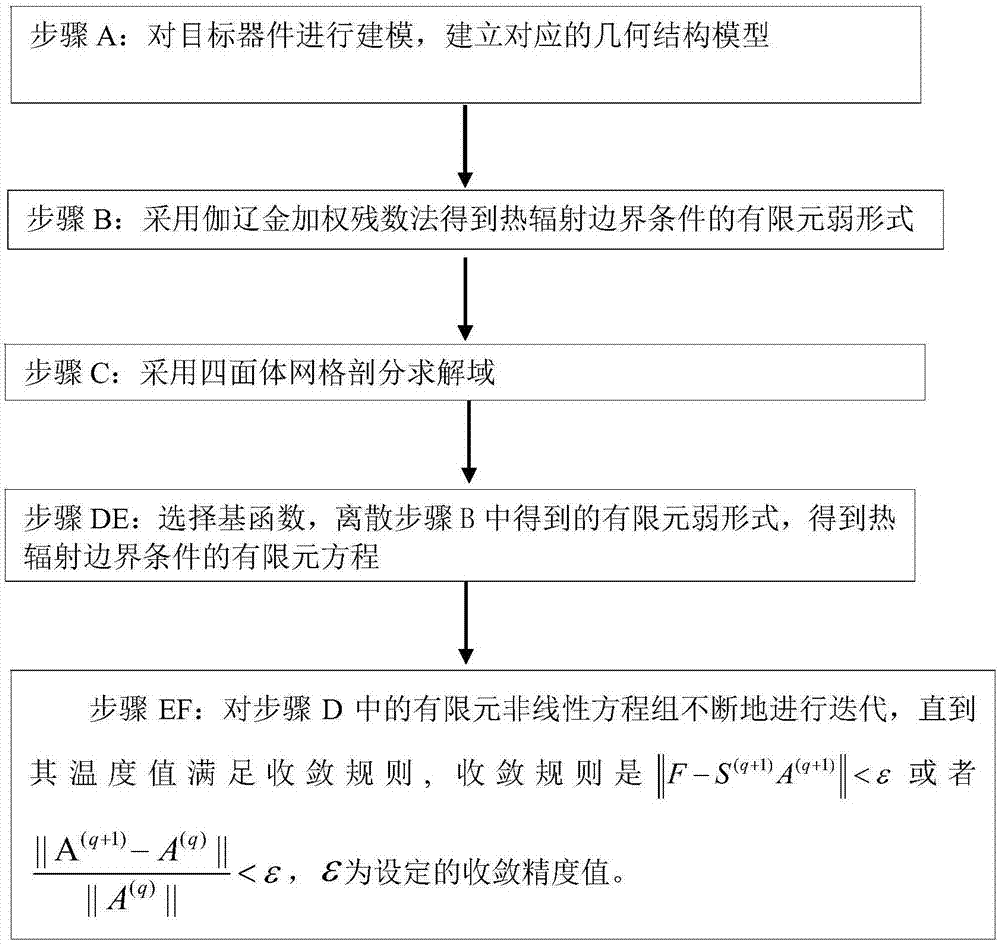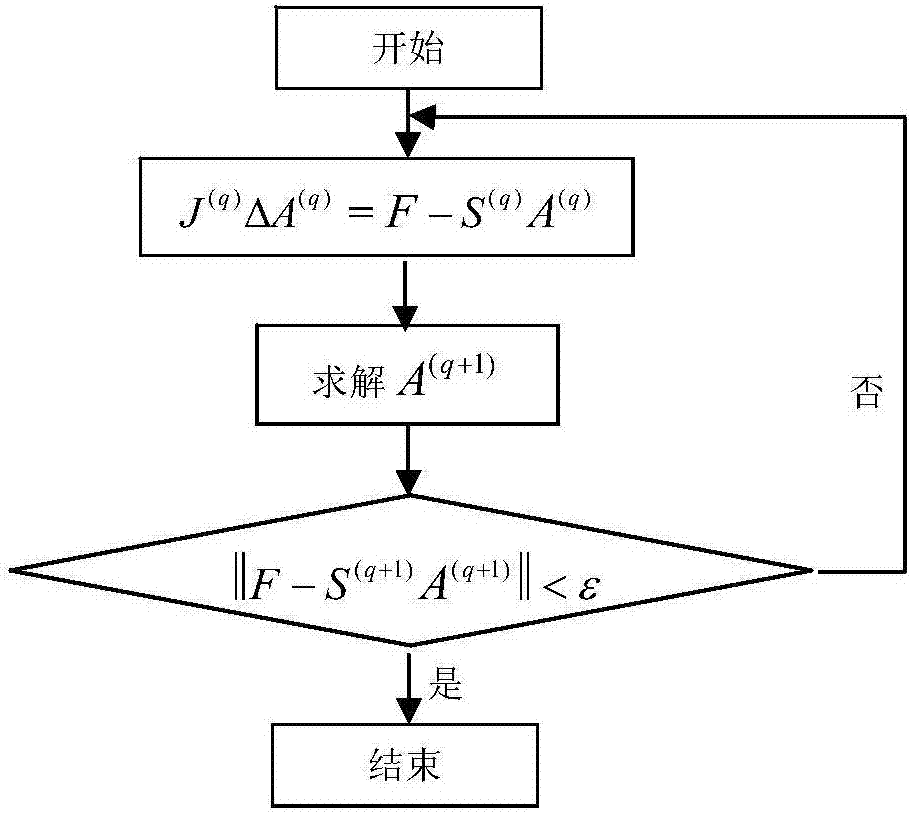Three-dimensional finite element simulation method based on heat radiation boundary conditions
A technology of boundary conditions and simulation methods, applied in 3D modeling, image data processing, special data processing applications, etc., can solve problems such as lack of verification of complex models, failure to deal with radiation boundary problems, etc., and achieve the effect of solving insufficient applicability
- Summary
- Abstract
- Description
- Claims
- Application Information
AI Technical Summary
Problems solved by technology
Method used
Image
Examples
Embodiment Construction
[0021] The technical solution of the present invention will be described in detail below in conjunction with the accompanying drawings and specific embodiments.
[0022] refer to figure 1 , a three-dimensional finite element simulation method based on thermal radiation boundary conditions, including the following steps:
[0023] A. Model the target device and establish the corresponding geometric structure model.
[0024] B. The finite element weak form of the thermal radiation boundary condition is obtained by using the Galerkin weighted residual method.
[0025] In order to solve the thermal radiation boundary condition with finite element, it is necessary to construct the boundary value problem first, including two parts: the governing differential equation of heat conduction and the thermal radiation boundary condition, as shown in the following equation:
[0026]
[0027]
[0028] in is the Laplace operator, u is the temperature value in the solution domain, k i...
PUM
 Login to View More
Login to View More Abstract
Description
Claims
Application Information
 Login to View More
Login to View More - R&D
- Intellectual Property
- Life Sciences
- Materials
- Tech Scout
- Unparalleled Data Quality
- Higher Quality Content
- 60% Fewer Hallucinations
Browse by: Latest US Patents, China's latest patents, Technical Efficacy Thesaurus, Application Domain, Technology Topic, Popular Technical Reports.
© 2025 PatSnap. All rights reserved.Legal|Privacy policy|Modern Slavery Act Transparency Statement|Sitemap|About US| Contact US: help@patsnap.com



